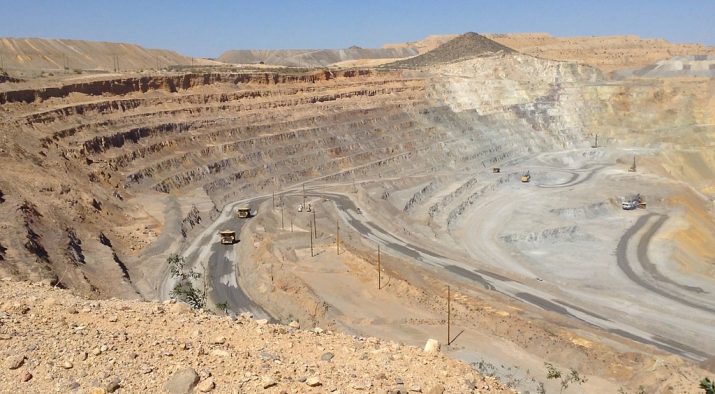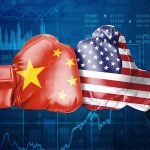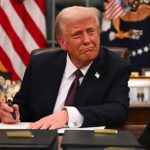
Trump’s rare earths push: A bid to break China’s stranglehold, but challenges remain
Sunday, April 27, 2025 by Willow Tohi
http://www.products.news/2025-04-27-trumps-rare-earths-push-break-china-stranglehold.html

- China controls 80% of global rare earth processing, while the U.S. lacks domestic refining capacity despite having reserves. Critical minerals (e.g., dysprosium, terbium) are vital for defense (F-35 jets) and tech (iPhones), making dependence a national security risk.
- President Donald Trump’s executive order imposed 145% tariffs on Chinese imports (excluding electronics), sparking retaliation.
- Full independence could take 5+ years, with a Pentagon goal of a mine-to-magnet supply chain by 2027. Experts warn China’s dominance (e.g., 300,000 tons vs. U.S.’s 1,300 tons) makes rapid scaling difficult.
- China’s 2025 export restrictions heightened pressure for U.S. action. Transitioning will mean short-term costs but is critical for long-term security. Analysts stress the U.S. must accelerate efforts to avoid being caught in a future supply crisis.
Why does the U.S. depend on China for critical minerals? Who is working to change that? When will America gain independence in this vital sector? Where are the key domestic projects underway? And what obstacles stand in the way?
These questions are at the heart of President Donald Trump’s latest push to establish a self-sufficient rare earth supply chain—a move driven by escalating trade tensions with Beijing as well as national security concerns.
China’s April 4, export restrictions on seven heavy rare earth elements—used in everything from iPhones to F-35 fighter jets—highlighted America’s vulnerability. The U.S. lacks industrial capacity to refine these materials domestically, despite having abundant reserves underground.
“Currently in the United States, we have zero magnet manufacturers,” said Melissa Sanderson, board member of American Rare Earths and co-chair of the Critical Minerals Institute, in an interview with The Epoch Times.
The urgency: China’s dominance and U.S. dependence
China controls roughly 80% of global rare earth processing, a monopoly solidified over decades. The U.S. imports most of its refined rare earth metals from China, leaving defense and tech sectors exposed to geopolitical disruptions.
In response to Trump’s April 2 executive order imposing 145% tariffs on Chinese imports (excluding electronics), Beijing retaliated by restricting exports of dysprosium, terbium and five other critical minerals.
The administration has 180 days to propose solutions, including deep-sea mining and stockpiling, but experts warn full independence could take five years or more.
“If China bans the sale of rare earth minerals to the United States [permanently], that’s a positive thing because it’s going to force the United States to find a solution,” said economist Antonio Graceffo.
Domestic projects: Progress, but a long road ahead
Several U.S. initiatives are underway to close the gap:
- American Rare Earths (Wyoming & Arizona) – Developing a $456M refinery to process dysprosium and terbium.
- MP Materials (California & Texas) – Produced a record 45,000 metric tons of rare earth oxides in 2024 but still exports much of its ore to China.
- Lynas Rare Earths (Texas) – Awarded $258M by the Pentagon to build a heavy rare earths processing plant.
However, MP Materials remains China’s largest offshore supplier, shipping 32,000 tons annually to Shanghai Resources Industrial & Trading Co.
“We’re getting close to having something here in the United States,” said Ian Lange, an economics professor at Colorado School of Mines. “But ‘close’ is relative in this industry.”
The catch: Permitting, financing and China’s scale
Despite investment, hurdles remain:
- Permitting delays – Projects often take 10-20 years to approve.
- Lack of refining capacity – The U.S. still cannot process all mined ore domestically.
- Financing challenges – Rare earth mining is capital-intensive, and banks hesitate to lend.
China’s output dwarfs U.S. efforts. While MP Materials produced 1,300 tons of neodymium-praseodymium oxide in 2024, China produced 300,000 tons.
“The United States is a long way off from rivaling China in this strategic industry,” said Meredith Schwartz of the Center for Strategic & International Studies.
A national security imperative
President Trump’s push for domestic rare earth production is a critical step in reducing reliance on China, but full independence remains years away due to lack of infrastructure. The Pentagon’s mine-to-magnet supply chain goal by 2027 is ambitious, yet experts agree: the effort is necessary to safeguard national security.
As trade tensions escalate, the U.S. must balance short-term economic pain—such as higher costs during the transition—with long-term strategic benefits.
One thing is clear: the era of unchecked dependence on Chinese rare earths is ending. The question is whether America can build a viable alternative before the next crisis hits.
Sources for this article include:
Tagged Under: Tags: big government, bubble, China, economy, future tech, Glitch, market crash, metals, national security, products, rare earth minerals, risk, supply chain, trade war, Trump
RECENT ARTICLES


TRADE WAR FALLOUT: Chinese factories slow production as U.S. tariffs bite
By Laura Harris

Trump’s rare earths push: A bid to break China’s stranglehold, but challenges remain
By Willow Tohi

Study: Over 90 percent of toothpaste brands contain dangerous heavy metals
By Ava Grace

Trump retreats on auto tariffs, plans to exempt CAR PARTS from duties
By Ramon Tomey
COPYRIGHT © 2017 PRODUCTS NEWS


